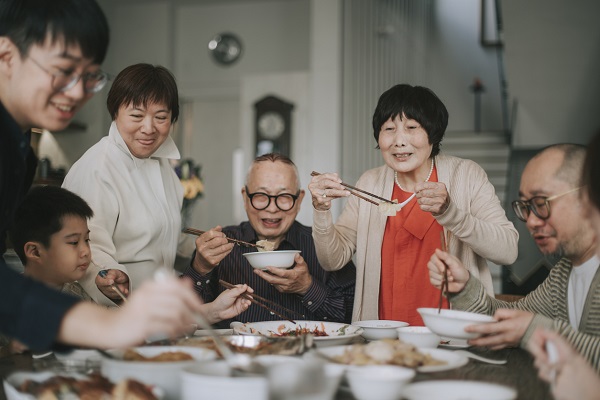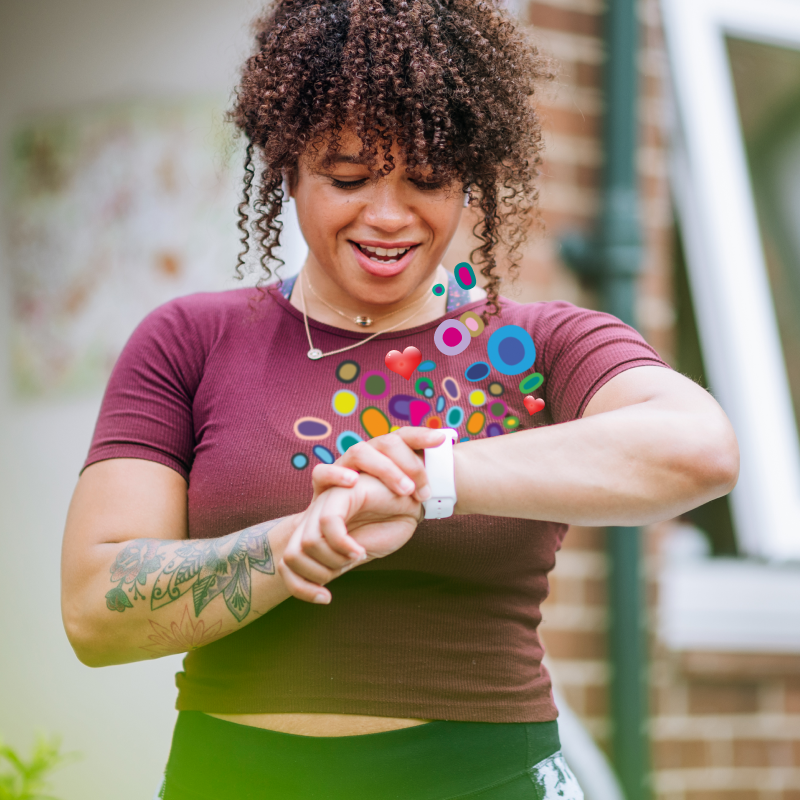-
This article was originally published on taste.com.au and has been republished here with permission.
Passata Day with Nonna, celebrating cultural holidays, joining a community garden, visiting local food festivals: food plays a special role in connecting family, friends and the community. Here are three reasons why.
With biblical origins, the phrase ‘to break bread together’ demonstrates just how long humans have used food to forge and grow relationships. Eating goes beyond alleviating hunger and providing nutrition - it’s also a way to bring people, community and cultural heritages together.
Food strengthens family traditions
Whether it’s as simple as a family roast every Sunday or an annual event like Passata Day, food has always played a central roll in connecting family. Food rituals - big or small - reinforce family identity, are an occasion to reconnect and help create bonds across generations.
Take, for example, Passata Day: a tradition many Italian families participate in every year. Family members - both young and old - gather in Nonna and Nonno’s backyard to make bottles and bottles of passata. Not only does everyone leave at the end of the day with enough passata to last them a year, but it’s a day to celebrate family bonds and cultural traditions.
Similarly, in Armenia, lavash bread making is an integral part of their culture. While the dough is typically prepared by a small group of women, the overall process is a family affair with young girls acting as aides and men making the special oval cushions used to make the bread. Even UNESCO highlighted that the group work in baking lavash “strengthens family, community and social ties.”
Food ties you to your culture
Food doesn’t just draw you closer to your family - it can help you feel part of a community, too. Studies have shown that food sharing and offering among non-family members, like in a community, can help establish initial contact, facilitate relationship maintenance and offer support. For example, in the Jewish community, members will provide food to a person in mourning for seven days following a death, using food as a way to show care and support.
The same goes for Afghan culture, where food is used to demonstrate hospitality, often through the ‘dastarkhan’. When guests visit, an assortment of traditional dishes prepared by the host is arranged on a tablecloth laid on the floor, with the best dishes placed near the guests and tea served throughout the meal.
Food is also a way to feel connected to your culture in an increasingly isolated world. For example, when celebrating a cultural holiday, such as Chinese New Year or Christmas, on your own or with only a handful of people, it’s comforting to know people around the world are celebrating with you at the same time and with the same traditions.
Food facilitates community connections
For people without family, the community is the ideal place to form relationships. Additionally, celebrating food that is tied to one’s community provides a source of comfort and social connection.
Community gardens, for example, emerged in Australia at the turn of the 20th century in response to war and food shortages. While they started as a need for nourishment, over the years they’ve grown far beyond that and are now seen as a place to bring people from all walks of life together, to prepare and share food, and to build a community hub.
Similarly, community food festivals have been growing exponentially across the nation. As well as celebrating, showcasing and sampling local, rural and native produce, they also provide an opportunity to bring local communities together over their love of food. Check out some of the events around the country that we think are worth a road trip.
7 unique food community events in Australia
Darwin Laksa Festival, NT
Did you know the Top End is recognised internationally for its laksas? Our favourite part of the festival is the Laksa Food Tour, where fans visit local restaurants across Darwin and rural areas to taste and rate all the laksa. Craving a warming bowl now? Try our quick green chicken laksa.
Ngarku’adlu (Let’s eat), SA
Curated and prepared by the country’s most respected First Nations chefs, this event showcases native ingredients and aims to regenerate culture, community and tradition. Unfortunately, it’s already come and gone for 2021, but make sure you bookmark it for 2022.
The Truffle Festival, ACT
This unique festival is a must-visit for foodies. From joining specially-trained dogs to sniff out hidden truffle gems to sampling the winter black mushroom at local cafes, restaurants and wineries, there’s something here for everyone.
Narooma Oyster Festival, NSW
With a free freshly-shucked oyster on arrival, how could anyone turn down a trip to the NSW South Coast to attend the Narooma Oyster Festival? There are cooking demonstrations, shucking competitions and plenty of samples, of course.
Paniyiri Greek Festival, QLD
Held in South Brisbane in May, Paniyiri is Australia’s largest and longest-running Greek festival (it’s now in its 45th year!) Expect haloumi, dolmades and maybe a few smashed plates - opa! Get in the mood with our best Greek recipes.
Mandurah Crab Fest, WA
While it may be cancelled this year, we couldn’t not include this much-loved crab fest in our list. The biggest free regional community event in WA, it normally attracts 100,000 people and for good reason: who doesn’t love delicious crustaceans?
Koonya Garlic Festival, TAS
Yes, you read that right: a whole festival dedicated to the fragrant bulb. A highlight is the Garlic Growers’ Competition where garlic bulbs are judged for their presentation, condition and quality - who knew there was so much to this staple ingredient!
Food brings families and communities together - here’s why


Live Better rewards
Live Better rewards is Medibank’s health and wellbeing program inspiring, supporting and rewarding you to eat, move, and feel better, all while enjoying the things you do every day.
Medibank members with eligible hospital or extras cover could earn up to $400 worth of rewards every year from our range of partners or even get discounts on premium payments, by redeeming the points earned for tracking healthy actions. Plus, if you shop with our partners, you could earn even more points!~
Things you should know
~ Medibank Live Better Challenges & Goals Earning Policy: The participant of a Medibank Live Better Challenge or Goal may not receive Live Better points or may have their already credited Live Better points reversed in accordance with the Medibank Live Better terms and conditions. To earn Live Better points, the participant needs to properly complete 100% of the eligible Challenge according to the instructions. The number of Live Better points available for Medibank Live Better Challenges and Goals is subject to change without prior notice. The maximum number of Live Better points that each Medibank Live Better member can earn from successfully completing health and wellbeing Challenges, Goals or any Onboarding action in a calendar year is 40,000 Live Better points. To the extent of any inconsistency between this Policy and the Medibank Live Better terms and conditions, the terms and conditions will take precedence.